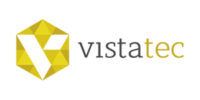Workplace diversity has been a major topic in recent years, and for good reason. Organizations need to account for the differences within their workforce. Doing so is not only commendable but actually leads to tangible improvements in performance and productivity. However, diversity is not just about visible traits like race or gender. Neurodiversity is often the overlooked aspect of this broader conversation.
Despite up to 20% of the population experiencing some form of neurodivergence, most organizations still lack a strategy to support these employees. This is especially surprising given the significant benefits a neurodiverse workforce can bring. Building an environment that supports neurodivergent employees can give your business a competitive advantage and contribute to long-term success.
What Is Neurodiversity?
Neurodiversity refers to the idea that there is no “standard” way for brains to function. Everyone processes and interprets information differently, which means they experience and interact with the world—and the workplace—differently.
Most people are ’neurotypical,‘ meaning their cognitive functions align with societal norms and expectations. However, 15% to 20% of people are neurodivergent, with differences significant enough to require attention.
Neurodivergence can include traits like:
- Attention Deficit Hyperactivity Disorder (ADHD)
- Autism Spectrum Disorder
- Dyslexia
- Dysgraphia
- Obsessive-Compulsive Disorder (OCD)
- Tourette Syndrome
- And others
It’s important to remember that neurodiversity is a spectrum. We should acknowledge it for the unique perspectives and potential advantages it brings to organizations.
The Benefits of a Neurodiverse Organization
Like other forms of diversity, embracing neurodiversity can provide a competitive edge. Hiring neurodiverse employees opens the door to new perspectives, reduces groupthink, and propels innovation. For example:
- Autistic employees may process information more quickly, increasing productivity.
- ADHD and dyslexic employees often think more creatively, offering out-of-the-box solutions.
- Neurodiverse employees bring fresh insights to discussions and problem-solving.
- They tend to have higher loyalty and lower turnover rates compared to their neurotypical peers.
Prioritizing neurodiversity in your organization can significantly enhance your business performance. The key is creating a culture that supports neurodivergent employees and harnesses their cognitive differences.
Understanding the Work Styles of Neurodivergent Employees
Embracing diversity in the workplace means acknowledging that there is no singular type of employee. Neurodivergent individuals have different work styles depending on their cognitive differences. Understanding these preferences is the first step to fostering a truly inclusive workplace.
Common Considerations for Neurodiversity in the Workplace
Autism: Employees on the autism spectrum often prefer structured routines and predictability. They may struggle with unexpected changes or social interactions, thriving more in solo tasks or roles with clear, defined workflows.
ADHD: Employees with ADHD might need more flexible schedules to accommodate fluctuating levels of focus. They tend to perform better in short, focused bursts of work rather than prolonged, repetitive tasks over long periods.
OCD: Employees with OCD may focus intensely on details, sometimes requiring guidance to keep them on track. Regular check-ins and support systems can help them stay productive while mitigating anxiety.
Dyslexia: Dyslexic employees might struggle with task management and prioritization. Flexible work hours and support tools can significantly improve their performance.
By analyzing different work styles, you can identify potential challenges and provide the right support systems. This creates a culture that enables all employees, neurodivergent or not, to succeed.
How to Build a Culture of Support for Neurodivergent Employees
Building a culture that embraces neurodiversity takes time and effort, but it’s essential for unlocking the benefits of a neurodiverse workforce and contributing to a fairer society in general.
The first step is fostering a strong sense of belonging among all employees. Everyone should feel encouraged to share their preferred working styles and feel safe to be themselves at work.
Employee Education
Start by educating your employees about unconscious biases they might have toward neurodivergent individuals. These biases can lead to judgments that are not only unfair but also harmful. By helping your workforce recognize and address these biases, you create an environment where everyone is seen and valued for their unique contributions.
Encourage open discussions about work styles and preferences, allowing employees to share without fear of judgment. When microaggressions occur, address them with education rather than punishment to foster understanding and respect.
Supporting neurodiversity requires work from all employees. Encourage peer support by promoting empathy and awareness of different thinking and working styles. Employees will feel more comfortable and empowered to bring their best to work by creating a culture of openness and inclusion.
Fostering a Collaborative, Supportive Environment
Neurodivergent employees may face judgment or bias, whether their divergence is visible or not. Only by actively building a company culture that actively embraces and supports neurodiversity can we fully leverage the advantages and create a more inclusive, productive, and successful work environment.
Understanding neurodiversity can be a huge asset in industries like localization, where collaboration is essential. Organizations can create a more inclusive, productive, and innovative workplace with the right approach.
Contact us to learn how Vistatec embraces neurodiversity and builds a culture supporting diverse thinking and working methods.

